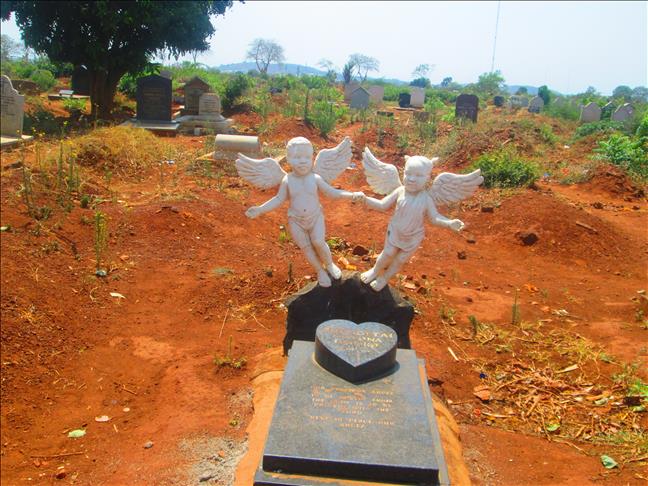
LUSAKA
Zambia boasts 72 culturally diverse tribes, each with its own unique customs and traditions.
Diverse as they are, the different tribes share many of the same funeral rites.
The rites are performed exclusively for family members, excluding children, unmarried persons, those who have committed suicide, those killed in animal attacks or those who have been cursed.
The main funeral rite common to all tribes is the form of burial.
Unlike in modern society, where the body of the deceased is wrapped in expensive linen before being put in a casket, most Zambian tribes wrap their dead in fresh animal hides or reed mats.
For some tribes, the body is buried in a family graveyard behind the home. Other tribes have private cemeteries in which they bury their dead.
"After burial, another animal – which accompanies the dead person to the land of the living dead – is killed," Dr. Wisdom Gondwe of the Sanctuary of Mercy, a Christian religious denomination in capital Lusaka, told Anadolu Agency.
"The meat of this animal is roasted and eaten without salt," he explained.
"Its bones are later burnt and its ashes given to the diviner to make a charm, which [is] given to mourners to drink and wash their feet and faces."
Gondwe, a priest, explained that when the burial rite is over, mourners generally disperse.
Only close relatives stay behind for a formal wailing period, the length of which varies according to the tribe, although the standard wailing period is one week.
No one is allowed to leave the funeral home without express permission – otherwise, they run the risk of being accused of witchcraft.
"During this period, some carefully chosen elders will covertly visit the graveyard to see if the tomb has been tampered with," Gondwe said.
"If it is found to have been tampered with, a diviner will be engaged to investigate the cause of death with the hope of taking countermeasures," the priest added.
"But if the grave is found to be intact, it will be concluded that the deceased died of natural causes and there will be no need to investigate," he asserted.
"Instead," Gondwe said, "mourners proceed to another funeral rite, that of calling the spirit of the deceased back to the family."
This rite, he explained, which is generally accompanied by a large feast, marks the end of all the restrictions imposed on the family following the death of one of its members.
At the end of this feast, property left behind by the deceased is shared among close relatives.
englishnews@aa.com.tr



